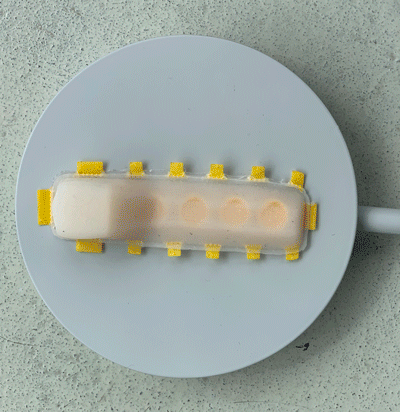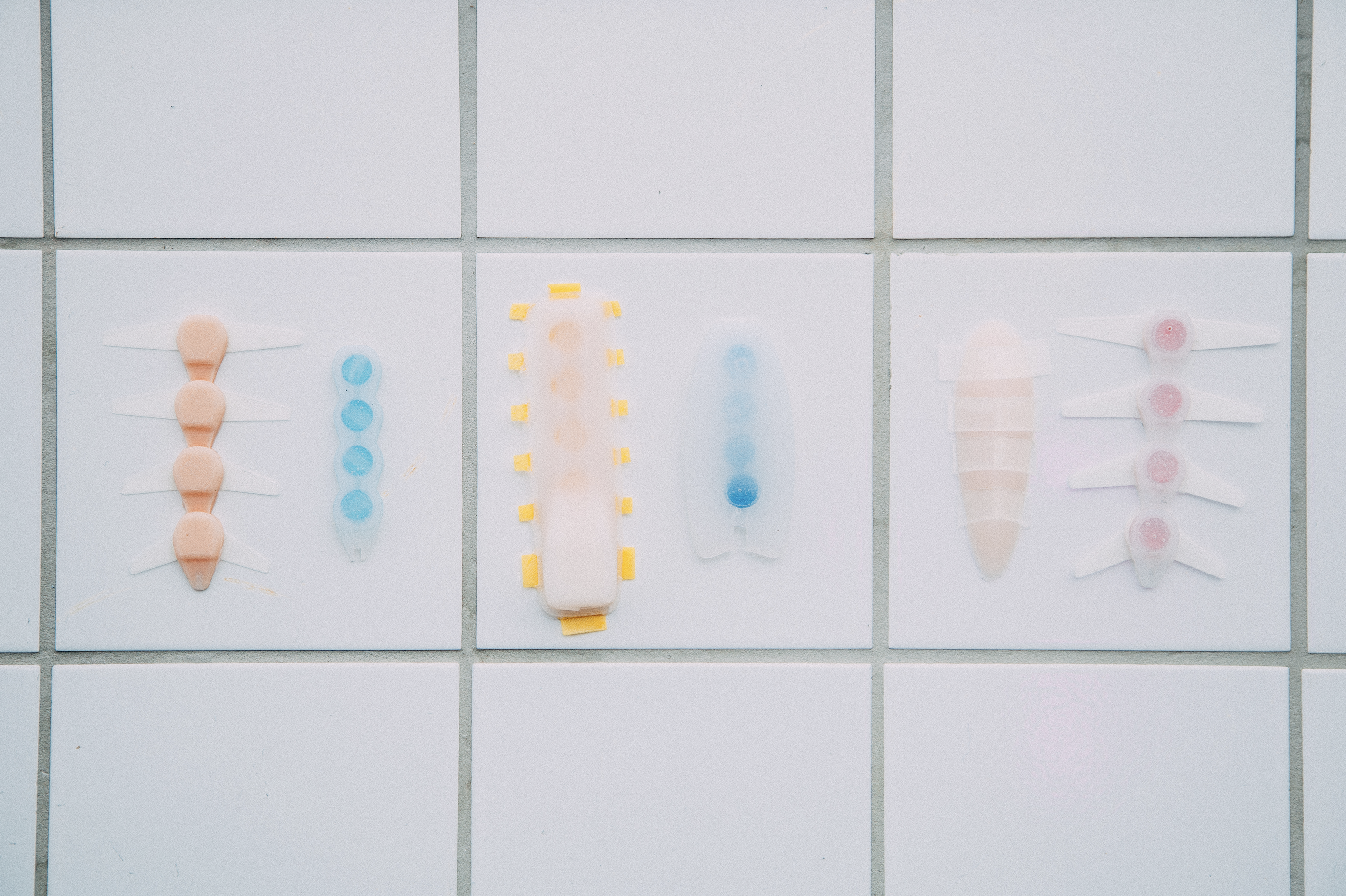EDA Self-Interface
ongoing
Partly completed as part of the master’s thesis for dual master in Computer Science (HCI) and Integrated Design and Management at MIT
Advisors: Arvind Satyanarayan, Rosalind Picard, James Landay

EDA self-interface is a real-time biofeedback device that connects a wearable EDA sensor to a real-time haptic biofeedback device. This project consists of three parts. First, a formal exploration of what on-body biofeedback devices that aim to extend the senses might look like, published in proceedings of TEI 20. Next, developing an algorithm for detecting a novel EDA characteristic (ongoing). And lastly, a long-term study of real-time biofeedback on the detected characteristic on an Apple watch (ongoing).

Photo credit: Nikolaj Rohde Simonsen
EDA Self-Interface architecture:

E4 EDA Sensor (left), iOS
app (middle), EDA Self-Interface (right).
The E4 EDA sensor sends the participant data to the mobile app in real-time via Bluetooth. The mobile app processes the data and broadcasts select changes in the signal to the EDA Self-Interface via Bluetooth.
![]()
The E4 EDA sensor sends the participant data to the mobile app in real-time via Bluetooth. The mobile app processes the data and broadcasts select changes in the signal to the EDA Self-Interface via Bluetooth.

Haptic wearable
biofeedback device assembly diagram.
(a) assembled unit (b) adhesive structure (c) actuator housing (d) Linear Resonant Actuators (e) silicone casing
(a) assembled unit (b) adhesive structure (c) actuator housing (d) Linear Resonant Actuators (e) silicone casing

EDA
Self-Interface Design Typologies